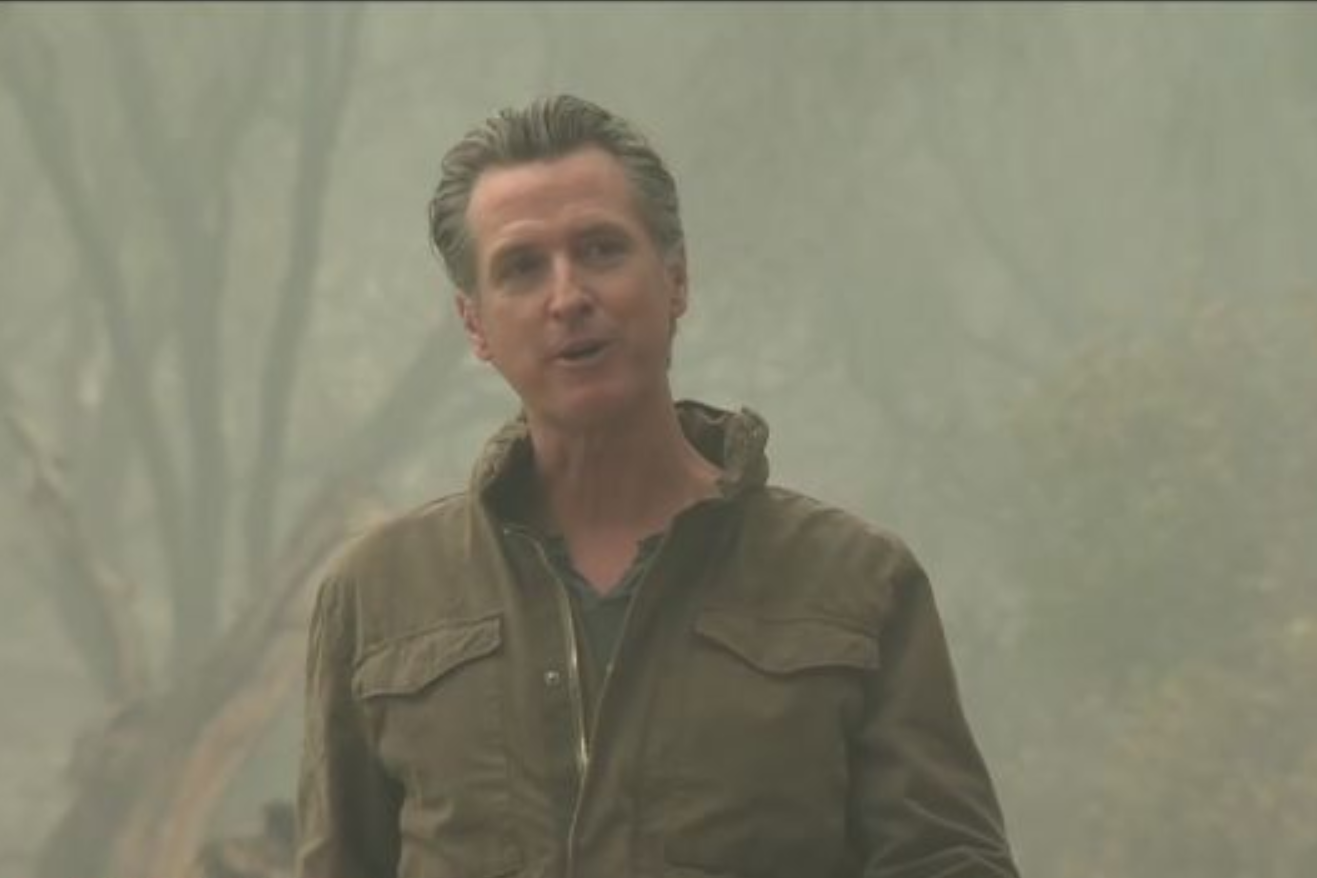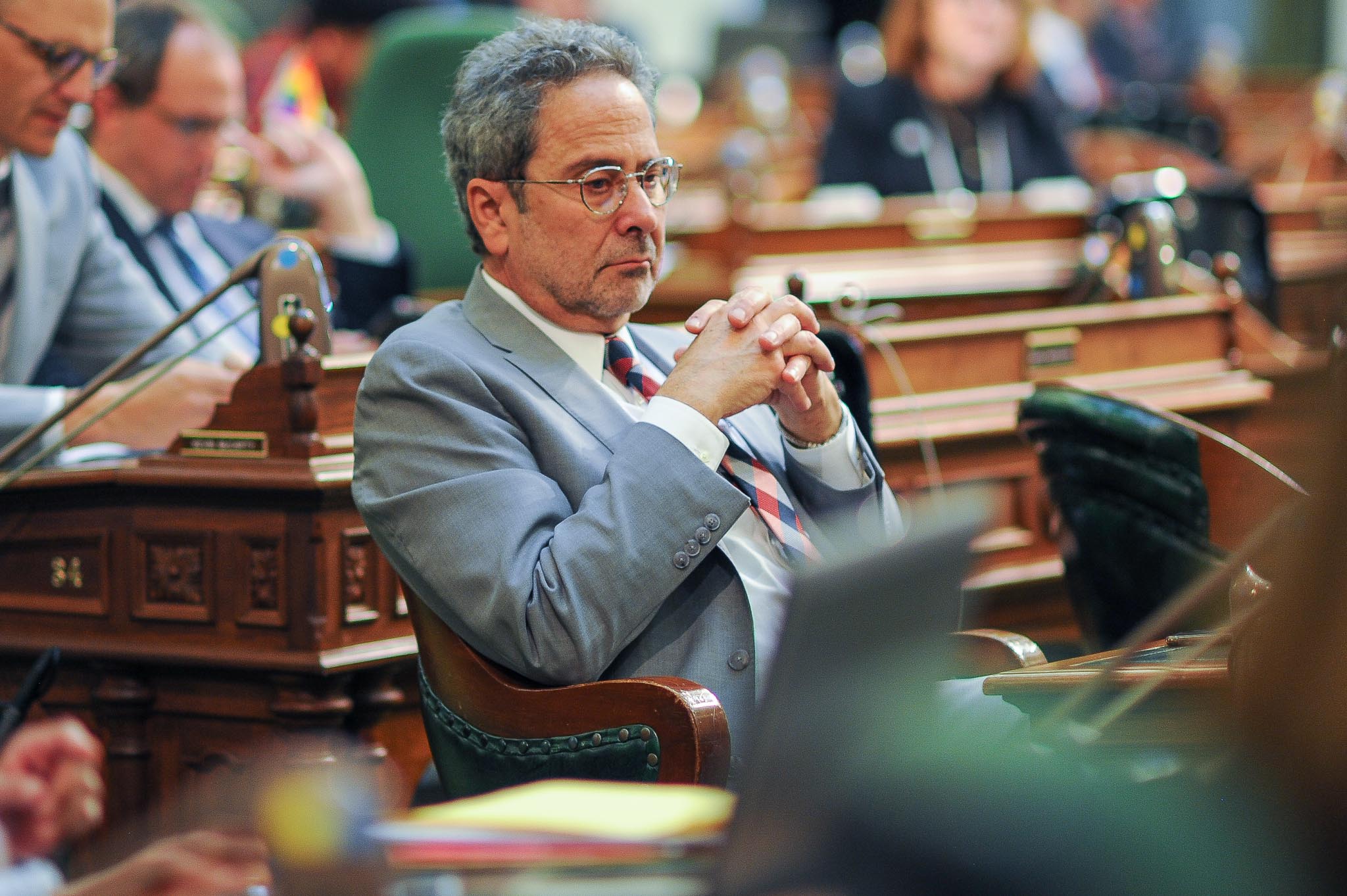
California State Capitol. (Photo: Kevin Sanders for California Globe)
CDCR Announces That 8 Prisoner Wildfire Camps Will Close by End of Year
Declining number of low-risk criminals, COVID-19 releases cited as reasons for the closures
By Evan Symon, October 21, 2020 3:16 pm
Earlier this week, the California Department of Corrections and Rehabilitation (CDCR) announced that 8 of it’s 43 prisoner wildfire camps, known as Conservation Camps, will be closing at the end of the year.
The closures will be split between Northern and Southern California, with 4 closing in the north and 4 closing in the south. According to the CDCR, remaining resources, staff, and inmates remaining with the program will be shifted elsewhere in a consolidation attempt.
“This will allow Cal Fire and CDCR to effectively consolidate resources into the remaining 35 conservation camps, so that they can be more efficient and better staffed for response to wildfires, other emergencies, and engagement in conservation-related work,” said a CDCR statement on Monday.

The camp closures had been planned since earlier this month. On October 9th, CDCR Secretary Kathleen Allison wrote a letter to staff of her intention to close down 8 of the camps.
“We could not be prouder of the incredibly dedicated conservation camp staff, the work performed, and the service to California in its time of need throughout the program’s 105-year history,” CDCR Secretary Allison said in her letter.
While there has been an increase of wildfires and a need for more hand crews, the main reason for the closures at the end of the year is because of the declining number of low-risk criminals in the CDCR system. As California has been reducing the number of prisoners due to both a court order from the U.S. Supreme Court and AB 109, a state bill in 2012, many lower-risk criminals have been receiving early releases, getting transfers from prisons to jails, or being put on probation without ever setting foot in a cell.
According to the CDCR, this has led to a drastic decline in prisoners working as wildfire fighters. In 2020 there were 1,780 in Conservation Camps, as compared to 3,710 in 2016. While the COVID-19 pandemic led to an increase of low-risk, potential wildfire fighter prisoners being released early before the wildfire season, that alone doesn’t account for such a dramatic drop.
Earlier this year, Governor Gavin Newsom did allow for 21 temporary crews to be formed from applicants checked out by Cal Fire and gave the green light for higher-risk inmates to join such crews. However, both came with issues. The 21 temporary crews will only last for the season before being disbanded, while the higher-risk criminals on the crews have been found by some Cal Fire workers to not be as reliable as lower-risk criminals.
Positives, negatives of inmate wildfire crews
Former prisoners who were wildfire fighters in previous years and were only recently allowed to have their records expunged to get firefighting positions as free civilians have said that many of the reasons for the closures given by the CDCR don’t stand up but also agree that an overall decline of prisoners in the program does give them a reason to reduce the number of camps.
“Whoever said that prisoners, even higher-risk prisoners, don’t do their part has obviously never been on the front lines with those guys,” said Victor Gabarra, who had helped fight wildfires as a prisoner. “It is true the numbers have gone down, and it makes sense for them to close the camps if there are not enough people at them. But whoever at the CDCR or wherever who has been saying that they don’t fight or work hard, or get into scuffles is probably sitting down at a desk when half of California is on fire.”
“We’ve gotten compliments from regular firefighters for what we’ve done. We were out there doing things that even they didn’t dare to do. Not everyone is just chopping trees or putting down lines. We’ve helped people evacuate. There was even one time some years back when I was on a crew that a family was leaving a wildfire in an older car and the husband had dropped his keys. In a few minutes, one of the guys had jimmied in their car and hotwired it for them to escape.”
“Say what you want for being in prison for stealing cars, but that day it was used for good. And the family left. We were told that when they asked some regular firefighters up the road who we were that their faces dropped when they learned that we came from a prison. But that goes to show you how we could sometimes even be uniquely skilled to help out in an emergency.”
“They use prisoners because they are cheap and because they don’t really run away or stop working. If they hadn’t been working they would have closed the program down years ago.”
“Again, the closing of the camps make sense because there are fewer, but they also aren’t dismissing any from duty are are being transferred. That shows how good they are. They aren’t cut and run.”
Cal Fire is currently pushing for more firefighters to make up for the loss of the Camps, citing the growing wildfire threat in California in recent years. Officials have said that hired firefighters would be cheaper than the inmate program and would have more skilled workers combatting blazes.
More wildfire related hirings and legislation are expected later this year and next year in preparation for next year’s wildfire season. Many experts have said that future seasons will only grow worse due to climate change in California.
- Plastic Ban Bill Passes Senate Committee - April 19, 2024
- ‘Fix Prop 47’ Initiative Receives Over 900,000 Signatures – Qualifies for November Ballot - April 18, 2024
- Google Fires 28 for Anti-Israel Sit-in at Work - April 18, 2024





Which camps will be closed? We have one in our county and not only do the inmates fight fires they brush road sides to reduce fire danger. They also play softball in the local league where they learn sportsmanship and social skills in addition to the work skills they acquire. This is one of the few win-win programs that California has so naturally they want to eliminate it.
I am a convict firefighter I have done five terms in prison since 1994 all nonviolent offenses I have always gone to fire camp I have learned so many things about life skills and communication with people and coordinating I was fortunate enough to fly on a helicopter out of Prado which is in Chino right outside this channel State prison I flew on a helicopter I was a tool man on that helicopter for 4 years from 2001 till 2005 it was a very successful program inmate firefighters on the hell attack crew we actually were hella attacker just like any other Cal fire ltech crew it was a program that lasted for 38 years and Cal fire lost the contract for the ship so I mean California department of corrections lost the contract for the ship through the San Bernardino county sheriff’s department the ship became a full-time Cal fire man ship with Cal fire firefighters on board can you imagine an inmate just came from San Quentin to there and was able to fly to every fire everywhere I went I flew and I was a tool man and I got help after I was the first one on and the last one off I coordinated the tools I loaded the tools I kept the tools sharp I offloaded the tools I took the weight of all the amazing I posted the weight to the pilots that he knew how much weight we had all this s*** all these things very response very big responsibilities for a person in any magnitude to perform I fought some of the biggest fires in California history I thought the Grand Prix old fire I thought the lick fire I fought the Thomas fire I was unfortunate enough or Fortune enough you’d say to participate in a natural disaster flood that happened in lytle Creek in 2003 after the grand peel fires learned how to handle things emotionally like regular firefighters on a search and rescue crew do my crew was partly responsible for recovering three bodies out of the 17 that perished in that fire I’ve since gone on and have served at Prado Ventura adult camp gambling sugar pine twice is she been Lomond and antelope camps besides the helicopter antelope camp in Northern California was probably my best times that I ever had in fire camp I was with one Captain for 4 years which is now a chief his name is Captain mattos a great man a great firefighter and a great person all around I loved him it was like a brother I was at Gatling camp after the Thomas fire and the floods and montecito Santa Barbara montecito area the floods hit them it was amazing we were the first hand crew of goblet on scene and we went to the top of the road very top there and earlier in the morning we got there and we sat there and the rain started coming well we the rings came in me being a swamper which is what Captain is right hand man suggested that the captain that maybe we should go down and feel our tanks up because we don’t know what we’re up against he says did you see a fire and you see a gas station open when we came to town yes as a matter of fact I did down by a warrant fairgrounds by the 101 freeway he will get on the horn and talk to the other captain and see if he’s ready to go and wants to get fuel on his truck too I’m sure he needs it but you don’t let’s ask him and contact the striking here my captain had full confidence in me that I was able to operate the radios and check in and check out when we were in other ranger units other want me to go into another unit like saying we can leave one accounting and into another we got informant and we’re going to entering their territory you let me talk on radio it was and it was fun so we were at the top of that hill and I convinced the captain that we should probably go get fuel and we left to drive down to the gas station to get fuel and all hell broke loose right where we were sitting right on the road or receiving was where the Earth let go and came rushing down that ravine through the little secluded town of montecito and it lasted for 45 seconds and 22 people perish we were there for like 3 weeks first week or so or on the recovery stage my crew helped recover five bodies from that one we found a man in the tree with a compound fracture in his leg that had watched his house get split in half he washed his wife bearish downstream and saw his kids standing across the balcony hallway the upper stairs when the house got split in half and his kids were standing there as he got swept down through the raging turmoil of mud and debris and rocks the kids lived he knew that his wife in Paris she had a strong will live and he found himself in the top of a tree about 30 ft off the ground because that’s how high the mud level was the mud level was to the rooftops of these two story homes that’s how he gained access we’d cut holes through the roof to go into the homes to search to see if any survivors are in there this man has a strong will to survive he was there for three days with no food water he left it was amazing story some not so happy ending but the greatest part of that and the feeling of doing all those things was to give closure to people when we help find their loved ones and that was very important so the firefighting program that that Cal fire has introduced into the California department of corrections seem has been part of that active scene since the 40s I know that susanville and Jamestown sister identical sister training facilities low level 2 story barracks type dormitory State type living are identical to each other bills identically the same twins but one one interest is one way and the other inches the other way one’s in one serves as Southern California training silly the other serves as Northern California well I know the Northern California training silly shut down and also one of the biggest mistakes that Cal fire ever California apartments ever made was allowing PC which is please protect custody inmates to be allowed into the fire campuses they talk about declining numbers of low level prisoners well one of them attributing factors is that because people that are solid people that have never crossed the line and never testified in court against somebody you’ve never gone against the grain of their of their gangs or the street or their hood are called general population inmates those are the solid people and then they integrated yards and they took the general population acronym away and designated a ND acronym which is non-designated well if you’re anybody in your real solid person you’re not going to barbecue with the sell-outs to washouts to drop outs in the rats and the thinks and the testifiers if you are a solid person you cannot live with these types of people because you never know when you might end up back and you cannot hang your head high and look at your homeboys in the eye if you made that choice too live with the non-designated population but I’ll say this I have nothing but good things to say about the firefighting program it worked for me for many many years I’m sorry that they changed their criteria because it’s not that they have not enough low level inmates that they don’t have enough solid people going to camp anymore because they can’t cuz Cal fire and I’m not Cal fire but California department of corrections chose to allow these low life people rapists child molesters rats Sphinx testifiers to go to camp so now the camps are full of those types of people so there you go people anybody reading this that’s what you got out there when you see these guys fighting fires now not saying that they can’t do the work the same but they’re no good pieces of s*** people thank you